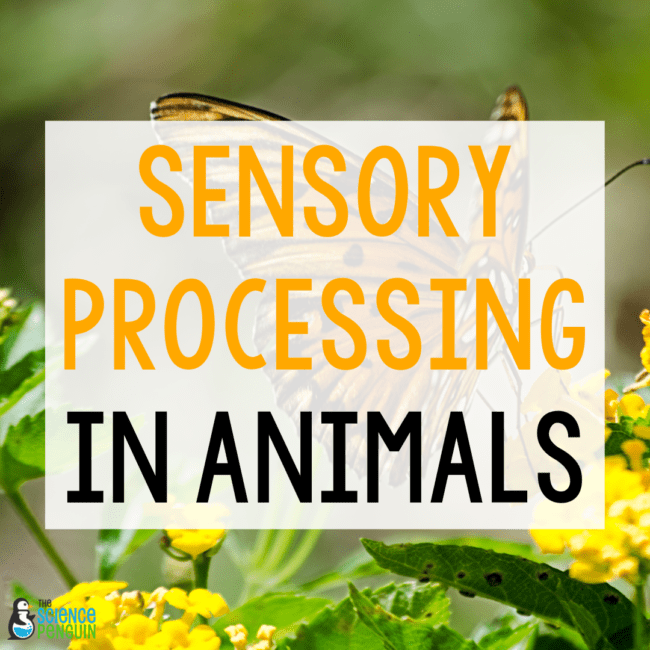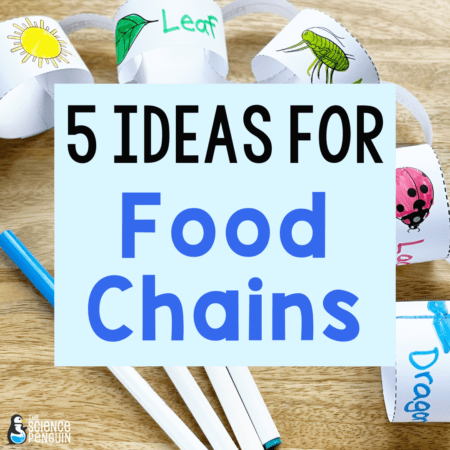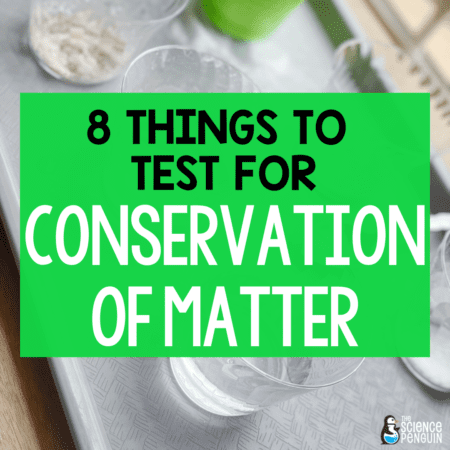
We begin this unit by watching a Phenomenon video that asks the question “How do animals receive, process, and respond to information from their senses?”. We then gather our thoughts as a class and make our C-E-R (Claim-Evidence-Reasoning) Chart for the unit. I steer my class towards the Claim that animals using their senses is a major part of their survival in their environment.
Chances are that by the time your students arrive in your 4th-grade classroom, they can name their five senses. Since animals use their five senses, this is a great start to get us started on this learning.
NGSS Standard 4.LS1.2 tells us that animals use their five senses to take in information, process it, and then react accordingly. It’s important that our students know how these steps play out in the animal world, so here are ideas for a 5E Phenomena-Based Unit on Senses.
Looking at the Next Generation Science Standards
NGSS 4-LS1-2 Use a model to describe that animals receive different types of information through their senses, process the information in their brain, and respond to the information in different ways.
Disciplinary Core Idea: Different sense receptors are specialized for particular kinds of information, which may be then processed by the animal’s brain. Animals are able to use their perceptions and memories to guide their actions.
Crosscutting Concepts: A system can be described in terms of its components and their interactions.
Science and Engineering Practices: Use a model to test interactions concerning the functioning of a natural system.
Senses Review
Before we begin… if you need a fun and quick review, I have an idea for you that’s an oldie but a goodie- Head Shoulders Knees Toes! Students actively point to all five of their senses. It’s a fun way to engage your group for a great unit of learning!
👁 ENGAGE
We begin this unit by watching a Phenomenon video that asks the question “How do animals receive, process, and respond to information from their senses?”. We then gather our thoughts as a class and make our C-E-R (Claim-Evidence-Reasoning) Chart for the unit. I steer my class towards the Claim that animals using their senses is a major part of their survival in their environment.
👂 EXPLORE
It’s time to put our senses to the test. As we work through five stations about senses, students are learning how the five senses can assist an animal in staying alive. These hands-on activities give students practice as they explore the world of auditory, tactile, olfactory, vision, and gustatory inputs.
One thing we do at this stage to practice auditory senses helping an animal to survive is by mimicking a bat. Students do this activity in pairs. One student is blindfolded and the other makes sounds to try and help the blindfolded student find them. Please make sure to consider safety and tripping hazards when completing this activity.
I tie literacy into this station (all 5 Explore stations have them!) by having students read a short article about the animal they are learning about. This is all planned for you in my 5E Phenomena-Based Unit on Senses.
👄 EXPLAIN
Now that we have had some time to experiment with how important our senses are, we begin to fill in our C-E-R Chart’s Evidence section. We use some of our collected information from the Explore station activities, and we also use most of our senses (see what I did there?!?) to synthesize visual input (by watching a video) and vision/auditory (by reading a nonfiction article). The video and article are about our brain and the powerful sensory processing it can do for us and for consumers of all kinds!
👃 ELABORATE
I want my kids to be able to apply this new learning to a real-world situation, and many of my students have dogs or have interacted with them. I give my students four clues that a dog is receiving through their senses (heat from the Sun is one example). Students have to determine the correct order of sensory processing, from what happens first when a sense is activated to how the brain interprets the information and then responds (the dog begins panting).
This stage of the learning process is also where our new vocabulary we have been using is collected and written down.
👅 EVALUATE
Working together, we look through our collected Evidence from our CER Chart, and we check the accuracy of our claim. We provide our Reasoning in that section of the chart for why our claim from the first day of the unit is valid.
😋EXTEND
One of the most interesting things about ecosystems is the concept of mimicry. To extend your learning, I have provided an activity where students compare Viceroy and Monarch butterflies. Viceroys look just like Monarchs because of mimicry. Students get to experiment with how butterflies use their sense of taste to avoid danger while also exploring the world of mimicry.
ASSESSMENT
An 8-question multiple choice quiz and a differentiated open response task are included in the 5E Phenomena-Based Unit on Senses.
TRY IT OUT!
This unit is a blast to teach, and I’ve collected all of these ideas into a Senses Unit that takes all of the planning off of your plate. Use those gustatory inputs of yours and have a treat that you can enjoy because of the ready-to-go unit below!
More Resources for 4-LS1-2

Sign up with your personal email and check your email now to be added to the 4th grade NGSS waitlist. We will send the planning guide when it is ready.






